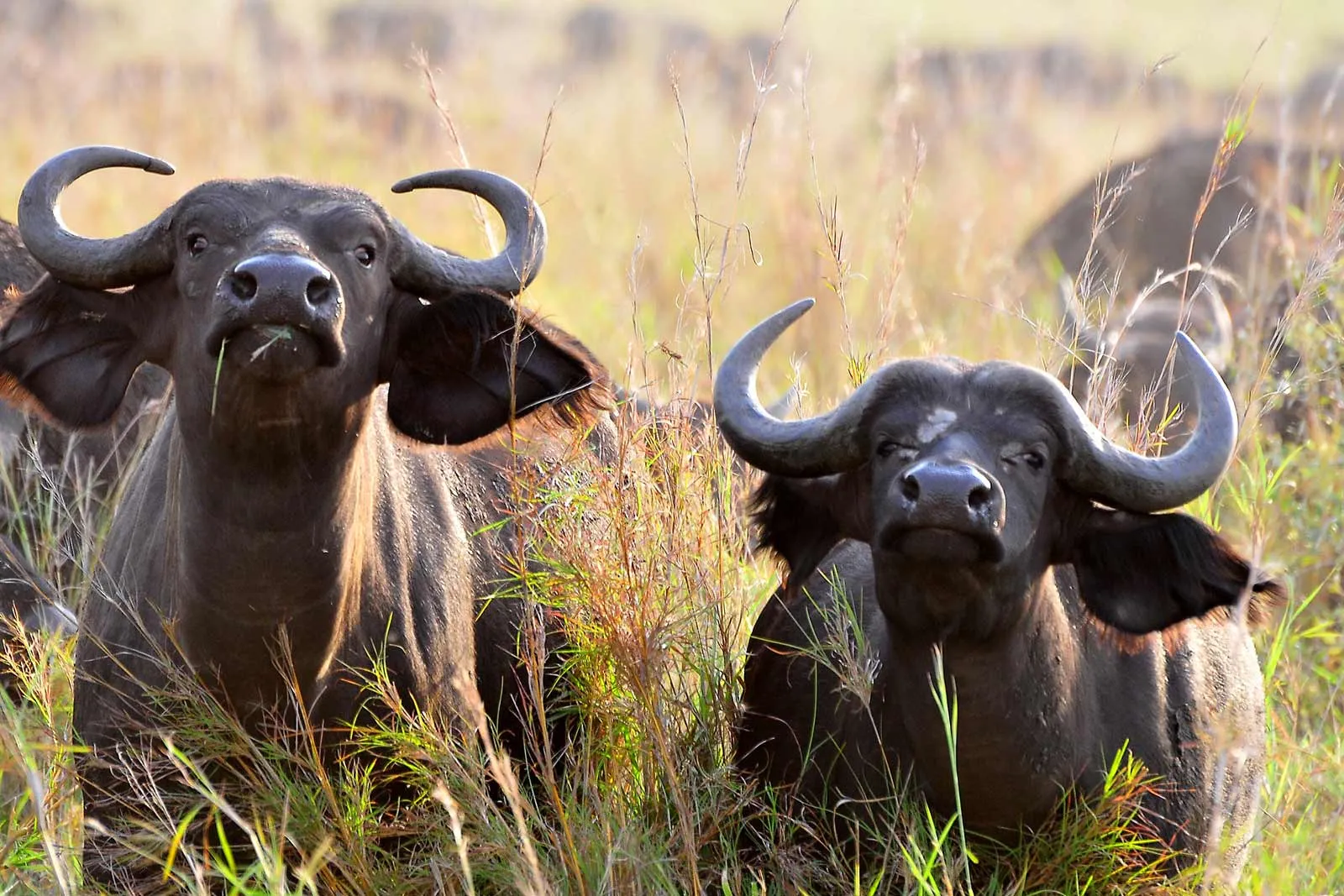Reproductive Anatomy and Behavior of an African Buffalo
The Reproduction and Gestation Cycle of an African Buffalo. The African buffalo, scientifically known as Syncerus caffer, is a large herbivorous mammal native to the grasslands and savannas of sub-Saharan Africa. Also referred to as the Cape buffalo, it is a robust and social animal known for its distinctive appearance and formidable horns. The gestation cycle of the African buffalo is a fascinating process that contributes to the perpetuation of the species. Let’s delve into the details of this remarkable reproductive journey.
Sexual Maturity: Female African buffaloes typically reach sexual maturity around 3 to 4 years of age, while males mature a bit later. Males engage in competitive behaviors such as sparring to establish dominance and gain access to females during the mating season.
Estrus Cycle: The estrus cycle, also known as the heat cycle, is the period during which a female is receptive to mating. In African buffaloes, the estrus cycle lasts about 21 days. Females signal their fertility through behaviors like increased restlessness, mounting other females, and a swollen vulva.
Mating and Fertilization: – The Reproduction and Gestation Cycle of an African Buffalo
The Mating Rituals: During the mating season, dominant males, often referred to as bulls, compete for the attention of receptive females. Mating rituals involve vocalizations, displays of strength, and physical confrontations to establish hierarchy and mating rights.
Fertilization: After successful mating, fertilization occurs internally. The sperm fertilizes the egg within the female’s reproductive tract, initiating the development of a zygote.
Gestation Period:
Duration: The gestation period for African buffaloes is approximately 11 months, similar to that of domestic cattle. The exact duration can vary slightly, but a typical gestation period ranges from 330 to 346 days.
Physiological Changes: Throughout the gestation period, the female undergoes various physiological changes to support the developing fetus. This includes an increase in body weight, changes in hormonal levels, and adaptations in feeding behavior to meet the nutritional demands of pregnancy.
Birth and Maternal Care: – The Reproduction and Gestation Cycle of an African Buffalo
Calving: African buffalo females give birth to a single calf, although twins can occur on rare occasions. Calving usually takes place in secluded areas, providing some protection for the vulnerable newborn.
Maternal Instincts: Mother buffaloes exhibit strong maternal instincts, fiercely protecting their calves from potential predators. The calf is usually able to stand and walk shortly after birth, allowing it to follow the mother and the herd.
Calf Development:
Nursing: Calves rely on their mother’s milk for nourishment in the early stages of life. The mother ensures that the calf receives the necessary nutrients for growth and development.
Integration into the Herd: The calf becomes an integral part of the buffalo herd, benefiting from the safety and support provided by the social structure. The herd offers protection against predators and contributes to the overall well-being of the calf.
Conclusion/Remarks – The Reproduction and Gestation Cycle of an African Buffalo
The gestation cycle of the African buffalo is a complex and essential process for the survival of the species. From mating rituals to maternal care, each stage plays a crucial role in maintaining the population of these magnificent creatures in the diverse ecosystems they inhabit; Understanding the intricacies of the gestation cycle contributes to our appreciation of the natural world and the mechanisms that drive the continuation of life.








